Making Asian sauces can be daunting, especially if you’re unfamiliar with the ingredients and techniques. But worry not, as there are plenty of Asian sauces to make at home. Some are even low-histamine sauces you can make from scratch. From marinating to seasoning, to dips, and even to dishes like stir-fries, soups, salads, and noodle dishes, there is a sauce here that can be made for any recipe. Try your hand at making these Asian sauces and see how easy and rewarding it can be!
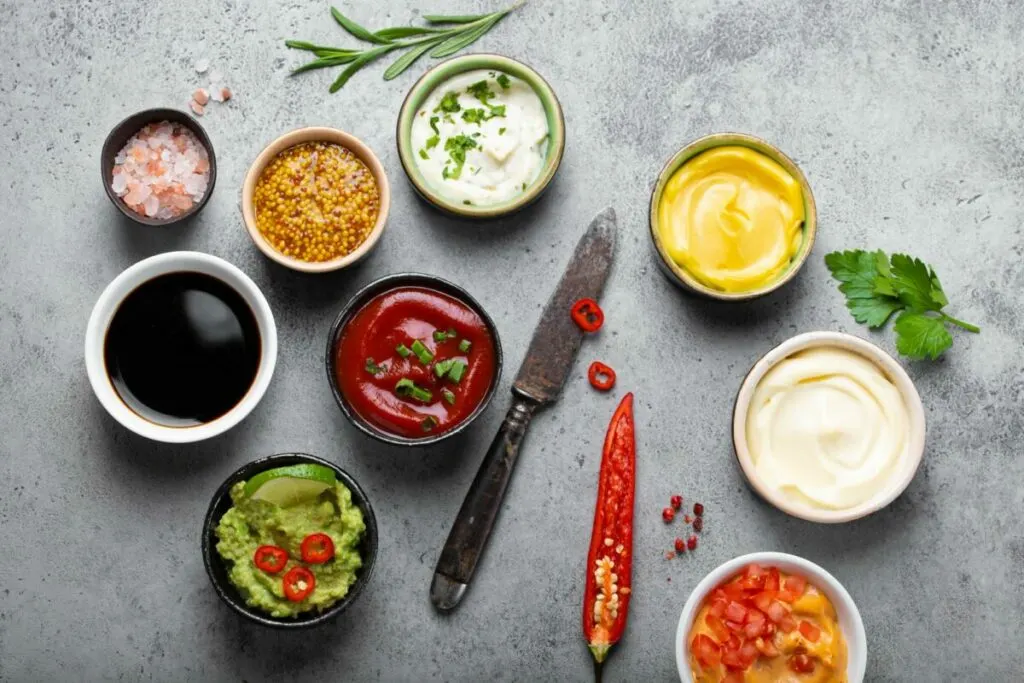
🔥 Spicy Asian Sauces
Gochujang
Gochujang is one of the tastiest Asian sauces to make at home. It’s a spicy Korean sauce made from fermented soybeans, chili powder, and glutinous rice. It has a thick consistency and a sweet and spicy flavor that can be used as a marinade for meat, as a dipping sauce, or as a condiment for bibimbap. You can also try using gochujang substitutes for a quicker and equally tasty flavor.
Doubanjiang | Broad Bean Paste
Doubanjiang, also known as broad bean paste, is a spicy and salty sauce made from fermented broad beans, chili, and soybeans. It’s commonly used in Sichuan cuisine and adds a unique flavor to dishes such as mapo tofu and kung pao chicken.
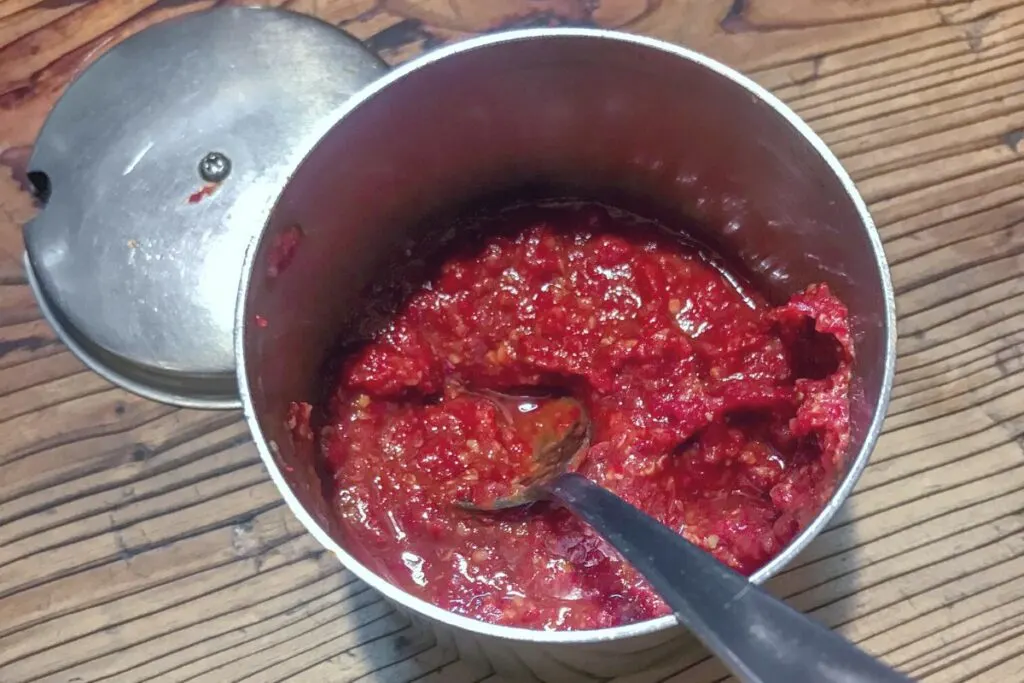
General Tso’s Sauce
General Tso’s sauce is a sweet and spicy sauce commonly used in Chinese-American cuisine. It’s made from soy sauce, hoisin sauce, rice vinegar, sugar, and chili flakes. You can also use it as a glaze for chicken or tofu or as a dipping sauce for egg rolls or spring rolls.
Chili Oil (Chili Crisp)
Chili oil is a fiery condiment made by infusing oil with chili flakes. It’s a popular ingredient in Chinese cuisine, adding a spicy kick to dishes like dumplings and noodles. To make your own chili oil, you can heat up some oil and add chili flakes, garlic, and Sichuan peppercorns to it. You could even try making a chili garlic sauce alternative instead.
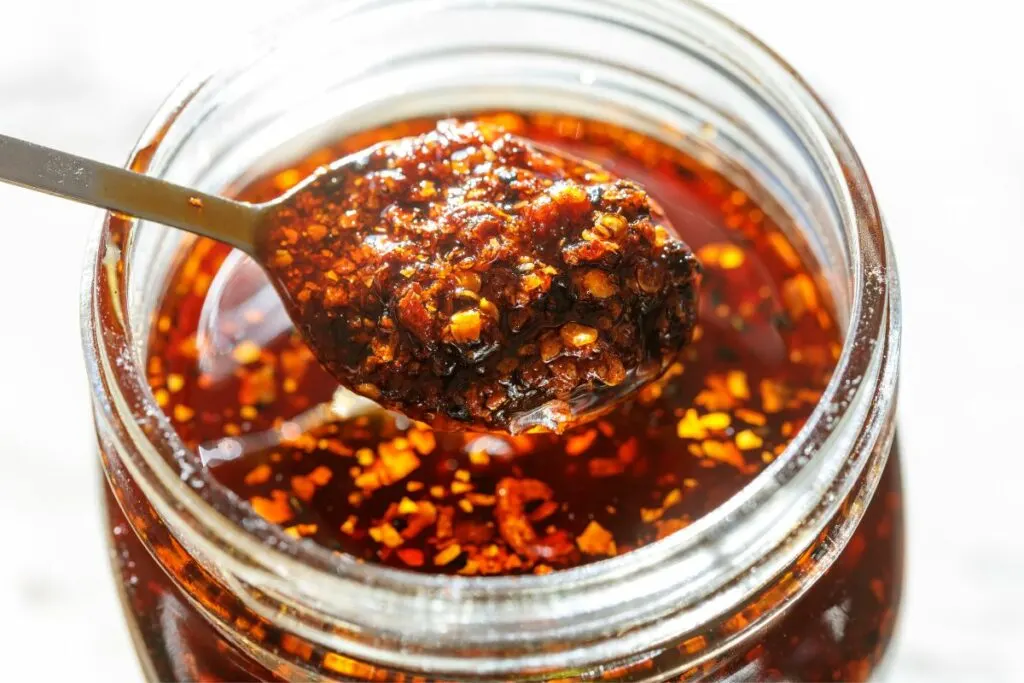
Yúxiāng
Yúxiāng, also known as fish-fragrant sauce, is a spicy and sour sauce commonly used in Sichuan cuisine. It’s made from pickled chili, ginger, garlic, and peppercorns. Yet, despite its name, it doesn’t contain any fish, so you can use it as a dipping sauce for hot pot or as a condiment for stir-fry dishes.
🍜 Sweet Asian Sauces
Teriyaki Sauce
Teriyaki sauce is another popular Japanese sauce often used as a marinade or glaze for meats and vegetables. It has a sweet and savory flavor and is made with a combination of ingredients that are commonly found in Japanese cuisine. The sauce is versatile and can be used in tons of dishes, but if you want a quicker way to getting this flavor, try using some teriyaki sauce alternatives instead.
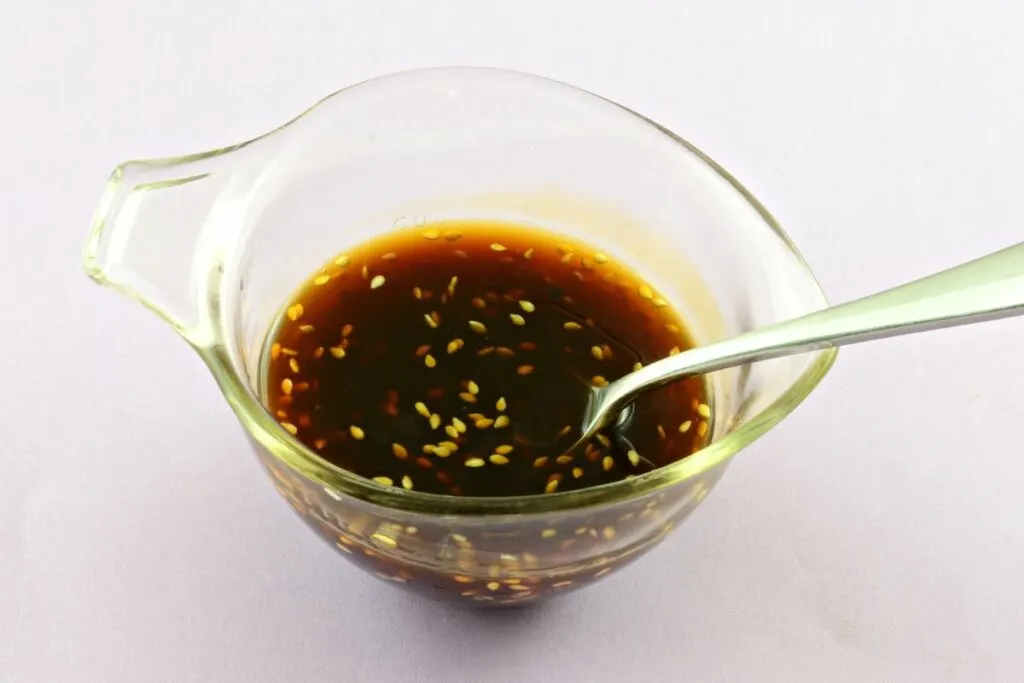
Tonkatsu Sauce
Tonkatsu sauce is a sweet and savory Japanese condiment that pairs perfectly with breaded and fried pork cutlets. It has a thick and smooth texture and is often used as a dipping sauce. The sauce is a staple in Japanese cuisine and can also be used as a marinade or glaze for meats and vegetables.
Kyeoja
Kyeoja is a delicious, spicy Korean dipping sauce that’s typically served with dumplings or other fried foods. It has a bold and tangy flavor thanks to the mustard base, with a kick of heat from the chili peppers. The sauce is a staple in Korean cuisine and is often made with a combination of traditional Korean ingredients, most commonly served alongside Korean barbeque.
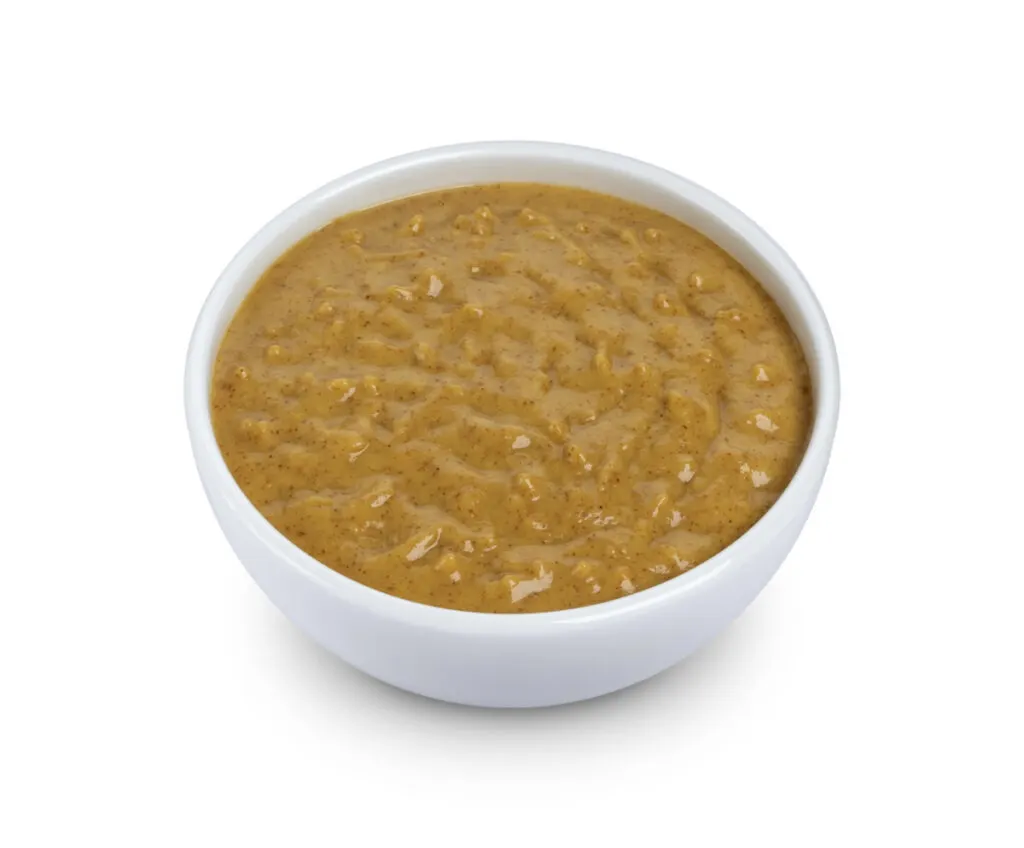
Gochujang Aioli
Gochujang aioli is a fusion sauce that combines the Korean chili paste, gochujang, with the French sauce, aioli. It has a creamy texture and a spicy, garlicky flavor that pairs well with tons of dishes. The sauce is a very popular condiment in Korean-American cuisine and is often used as a dipping sauce or a spread for sandwiches.
🧂 Salty Asian Sauces
Tamarind Sauce
A tangy and sweet sauce, tamarind sauce is the Asian sauce to make at home. It’s made from the pulp of the tamarind fruit and is often used as a dip or marinade for meats and vegetables. With its unique sour and sweet flavor, tamarind sauce is a more than capable ingredient that can add a delicious twist to your dishes.
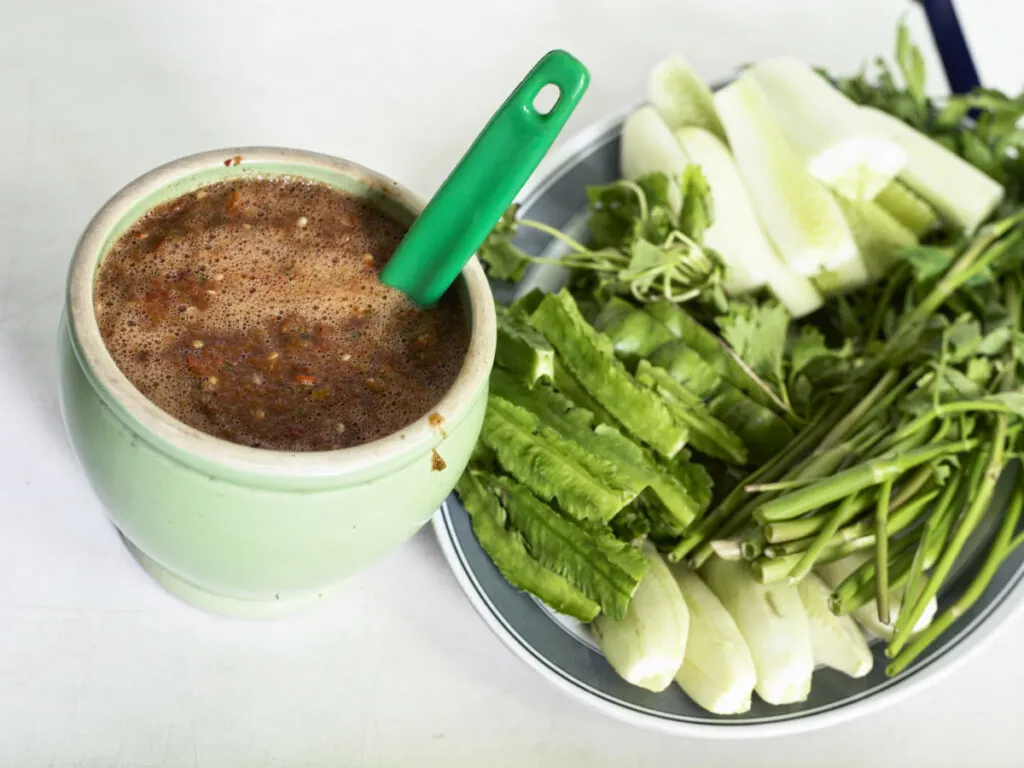
Fish Sauce
Fish sauce is a pungent and salty condiment that’s commonly used in Southeast Asian cuisine. Fish sauce and soy sauce are often compared in flavor, but fish sauce has a richer umami flavor. It’s made by fermenting fish with salt and water, resulting in a liquid high in umami flavor. The sauce is a staple in Thai, Vietnamese, and Filipino cuisine and is often used as a seasoning in marinades, sauces, and stir-fries.
Soy Sauce
Soy sauce is a dark, salty, and savory condiment that’s widely used in Asian cuisine. It’s made from fermented soybeans and is often used as a seasoning in marinades, sauces, and stir-fries. The sauce is used in Japanese, Chinese, and Korean cuisine. It also comes in different varieties, including light, dark, and tamari soy sauce. You can use light soy sauce substitutes and dark soy sauce substitutes for a quicker splash of flavor.

Ssamjang
Ssamjang is a Korean dipping sauce used in Korean barbecue. It has a savory and slightly sweet flavor made from fermented soybean paste, chili paste, and other seasonings. The sauce is often served with lettuce wraps, where the meat is wrapped in lettuce and topped with the sauce for added flavor.
Hoisin Sauce
Hoisin sauce is a thick and sweet Chinese sauce that’s commonly used as a glaze or a dipping sauce. Hoisin sauce and oyster sauce are quite similar, but this one has a more complex, sweet, and savory flavor with a hint of spice. The sauce is made from a combination of ingredients, including soybeans, garlic, vinegar, and sugar.
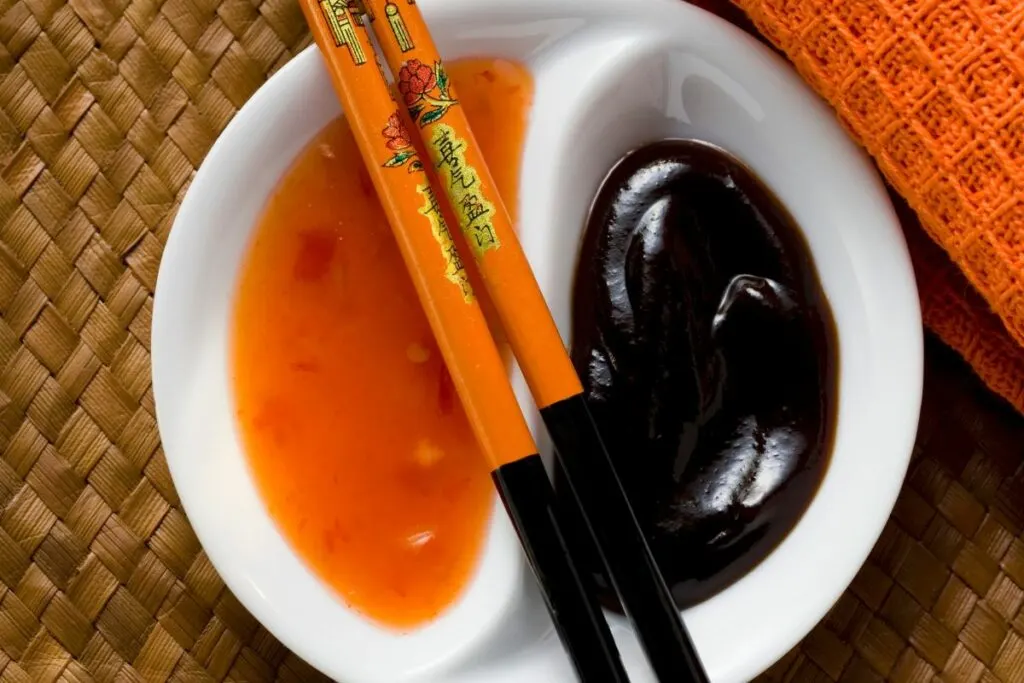
🥘 Creamy Asian Sauces
Japanese Kewpie Style Mayo
Japanese Kewpie style mayo and yum yum mayo are two of the best sauces to use. But the taste of Kewpie is unmatched. It’s a creamy and tangy mayonnaise with a rich, savory, and smooth texture that sets it apart from traditional American mayonnaise. It’s a versatile ingredient that’s often used as a topping for sushi rolls, a dip for tempura, or a spread for sandwiches.
Thai Peanut Dipping Sauce
Thai peanut dipping sauce is a creamy and nutty Asian sauce that’s used as a dip for spring rolls, satay, and other appetizers. It has a sweet and spicy flavor balanced by the peanuts’ richness. The sauce is also a key ingredient in Thai cuisine and is made with a combination of ingredients, including peanut butter, coconut milk, and chili paste.
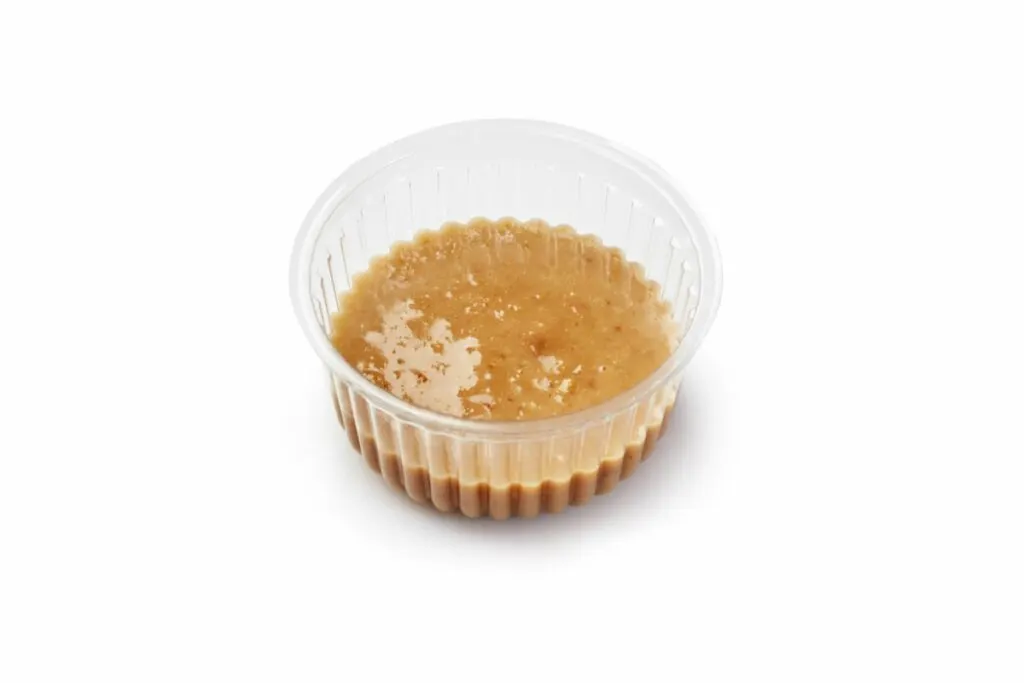
Gochujang Butter
Gochujang butter is a spicy and savory compound butter. If we’re comparing gochujang and chili garlic sauce, I’d stick to making this one. Its rich and creamy texture, combined with a bold flavor that’s both sweet and spicy, makes it a versatile addition to many dishes. This butter is often used as a topping for grilled meats or vegetables or as a spread for bread, and it adds a delicious kick to any meal.
🧐 FAQs
Asian sauces encompass a wide variety of condiments and flavorings commonly used in Asian cuisine. These sauces vary greatly in flavor, ingredients, and regional preferences, offering a diverse range of options to enhance dishes from different Asian cultures.
Several Asian sauces are naturally gluten-free, including tamari (gluten-free soy sauce), fish sauce, rice vinegar, and coconut aminos, providing flavorful options for those with gluten sensitivities or dietary restrictions.
Asian noodles pair well with a variety of sauces, such as soy sauce, oyster sauce, hoisin sauce, and sesame oil, adding depth and flavor to the dish.
